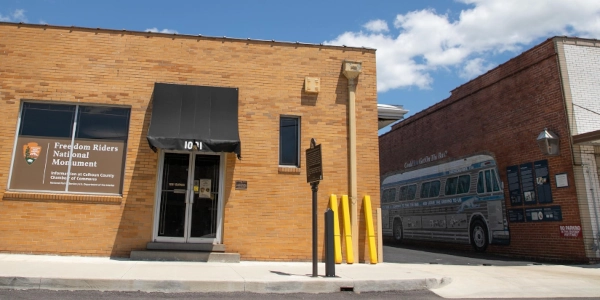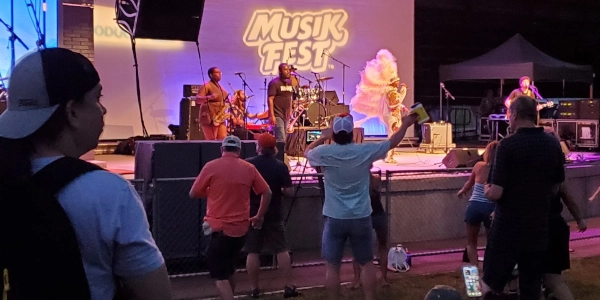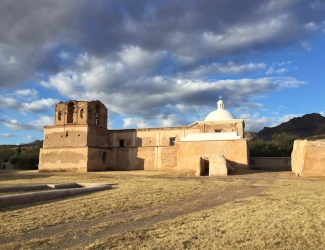
Image above: Photo of the side viewpoint of the Tumacácori Mission church from a distance. Courtesy National Park Service.
Spotlight on Lesser Known History
Tumacácori NHP
Arizona
America's Best History Spotlight
On this page we're going to Spotlight the lesser known historic sites and attractions that dot the history landscape across the USA and are worth a visit if you're in their area. And while they may be lesser known, some are very unique, and will be that rare find. You'll be, at times, on the ground floor, or maybe even know something others don't. It'll be fun. Visit them.
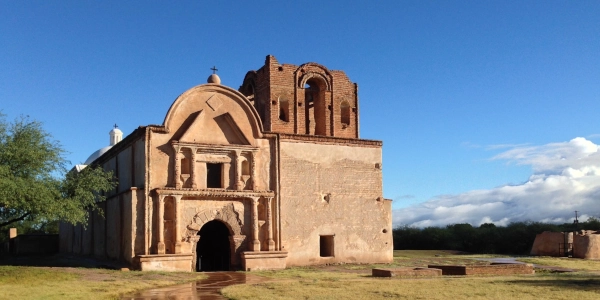
Tumacácori NHP, Arizona
The Spanish were pushing their influence from Mexico northward, into the PimerÃa Alta, the region of today's northern Mexico and southern Arizona. Father Kino, a Jesuit priest, established Mission San José de Tumacácori in 1687. Within a few years, he had established twenty missions in the area. Three of those missions sites exist within the National Historical Park; the other two, Los Santos Ãngeles de Guevavi, and San Cayetano de Calabazas. Today you can visit all three through the single park. The home mission for Padre Kino was Nuestra Sentildeora de los Dolores de Cósari. All of these missions were tasked with converting the Opata and Pimas Bajos Indians of the area to Catholicism and Spanish ways.
Photo above: Southern viewpoint of the Tumacácori Mission church with a slight view of the Convento Fragment, including three rooms, to the right. Courtesy National Park Service.
Sponsor this page for $100 per year. Your banner or text ad can fill the space above.
Click here to Sponsor the page and how to reserve your ad.
Info, What's There Now, History Nearby
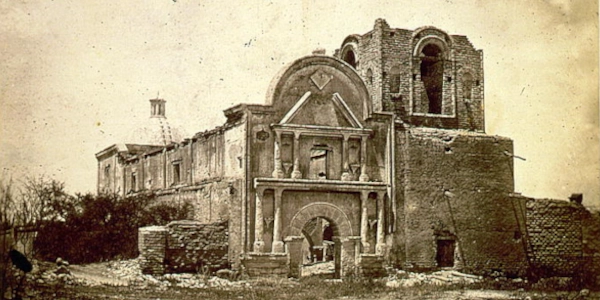
Tumacácori National Historical Park, Arizona
The mission church is a predominantly intact building with a nave, sanctuary, baptistry, sacristy, and bell tower. There are a number of outbuildings that still exist from its primary history as well as subsequent decades, including the Convento Fragment, Cooking Ramada, Convento Complex, the Jesuit Church Foundation, and more. Some of these are more intact than others. At its height, a partial square of building ran both perpendicular to its left, as well as parallel to its right with a smaller perpendicular wing of buildings. Outside those buildings were fields of agriculture. Today the National Historical Park contains three hundred and sixty acres. During its heydey, about two hundred people would have lived within the village of the mission.
Image above: 1870 photograph of the Tumacácori Mission Church, 1870, Carlo Gentile. Courtesy Library of Congress. Below: Portion of the mission, 2018, Carol M. Highsmith. Courtesy Library of Congress.
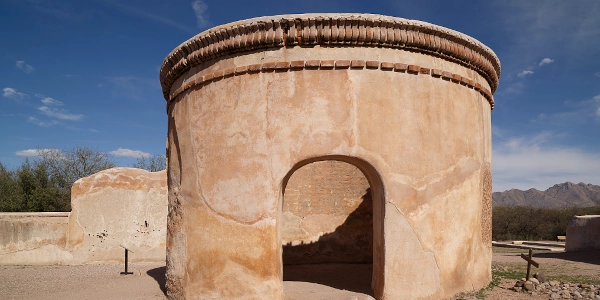
Where Is It
The monument is located at 1895 East Frontage Road, Tumacacori, Arizona 85640 in Santa Cruz County. It is located off Exit 29, Interstate 19, 45 miles south of Tucson and 18 miles north of Nogales.
What is There Now
Tumacácori National Historical Park
Your first stop will be at the Visitor Center located in a 1937 Museum building with interpretive exhibits and constructed in the style of other Sonoran missions. There is a fifteen minute film, orientation by park rangers, and exhibits, including dioramas. The Tumacácori mission itself, a three story adobe church, can be visited on a self-guided tour or a once per day, park ranger (most days) tour. There are hiking trails to visit, as well as other guided tours by park rangers from birding to the Anza and Santa Cruz River trails. There are also plenty of special events. Call to see if one is upcoming during your visit. They include camping on the church floor.
When Open and How Much
Adult charge is $10. The mission and Visitor Center are open daily from 9:00 am to 5:00 pm, except certain holidays. The Anza Trail, from other trailheads, is open 24 hours per day.
Fees and hours are subject to change.
Websites
Tumacácori NHP
History Nearby
You are very close to the Mexican border while at the mission, but alot of National Park sites are nearby, including the Coronado National Memorial, Saguaro National Park, and further away, Organ Pipe Cactus National Monument and Casa Grande Ruins National Monument.
-
Saguaro
National Park -
Casa Grande Ruins NM
-
Organ Pipe Cactus NM
-
San Pedro Riperian
National Conservation
Area
Photos, History, and More Spotlights
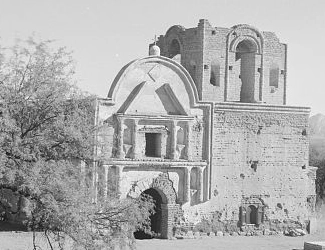
Tumacácori History
While Padre Kino established the mission and grew its outreach and footprint over twenty-four years, the tolerance by the Native tribes of the area fluctuated into being forced into a Spanish and Catholic way of life. Forty years after his death, in 1751, a coordinated attack on November 20, the Pima Uprising, occurred. The O'odham tribe had participated in the conversion for decades, but were becoming increasingly bothered by the Spanish and their priests who were beginning to reign over them as Monarchs. Rebels from the tribe had had enough. Over the next several days, one hundred settlers and two priests were killed. They would retreat, but raid the missions over the next months. For the O'odham who had converted; they were caught in the middle. Spanish soldiers retaliated, killing forty-nine rebels, and a new fort was built in June 1752 in the Santa Cruz Valley.
For sixteen years life went back to normal, but during that time, the Jesuits and their followers were gaining power and wealth that began to concern the Catholic Monarchs. On February 27, 1767, King Carlos III of Spain signed orders to expel the Jesuits from his lands. Six officers were chosen to complete the task of arresting fifty-two Jesuits in Sonora and Sinaloa. The priests were marched to Guaymas and held captive for nine months before being boarded on ship to Mexico, where they were marched to Mexico City. Twenty of the priests died on the journey. The remaining were shipped back to Europe and the Jesuit order kept disengaged for forty-one years.
From 1821 forward, there was much dispute about who owned the lands of Tumacácori. Finally, in 1908, President Theodore Roosevelt established the national monument through the Antiquities Act. It was run by the Forest Service. However, the previous disputes were still winding their way through the courts, and in 1914, the government lost the ten acres of land of the monument by court order. Four years later, title was restored to the Federal Government. In 1990, it was redesignated as a National Historical Park.
Photo above: Tumacácori Mission Church, 1937, Frederick O. Nichols, Historic American Buildings Survey. Courtesy Library of Congress.
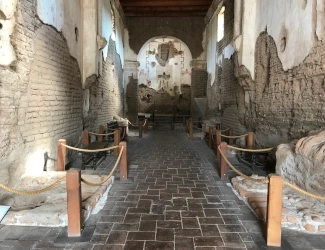
Padre Kino
Missionary Eusebio Francisco Kino was educated as a Jesuit priest at the Jesuit college at Trent, the Jesuit college at Hall near Innesbruck, Austria, plus other European universities, and joined the order on November 20, 1665. He traveled to the Americas in 1681, went on two missions to Baja California before his appointment to Pimeria Alta. Over the next twenty-four years, he would establish a total of twenty-four missions, and develop new techniques in modern agriculture and livestock raising.
Image above: Interior view of the Nave of the Mission Church. Courtesy National Park Service.
Buy Second Edition
America's Best History Timeline

Great book to keep middle school to college students up to date on their American history.
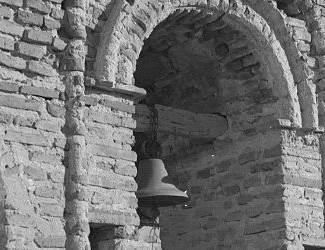
Missions of the Pimeria Alta
San José de Tumacácori
Los Santos Angeles de Guevavi
San Cayetano de Calabazas
San Ignacio de Sonoitac
San Xavier del Bac
Santa MarÃa Suamca
Nuestra Señora de los Dolores de Cósari
San Ignacio de Cabúrica
Santa MarÃa Magdalena
San José de Imuris
La PurÃsima Concepción De Caborca
San Diego del Pitiquito
San Antonio Paduano de Oquitoa
San Pedro y San Pablo de Tubutama
Nuestro Padre San Francisco de Atil
Nuestra Señora del Pópulo del Bisanig
Nuestra Señora de los Remedios de Doágibubig
Nuestra Señora del Pilar y Santiago de Coc&ocutespera
Santa Gertrudis del Sáric
Photo above: Bell Tower of the Tumacácori Mission Church, 1937, Frederick O. Nichols, Historic American Buildings Survey. Courtesy Library of Congress.

T-Shirts and Gifts from the official souvenirs of Americasbesthistory.com.
About
America's Best History where we take a look at the timeline of American History and the historic sites and national parks that hold that history within their lands.
Photos courtesy of the Library of Congress, National Archives, National Park Service, americasbesthistory.com and its licensors.
- Contact Us
- About
- © 2023 Americasbesthistory.com.
Template by w3layouts.

